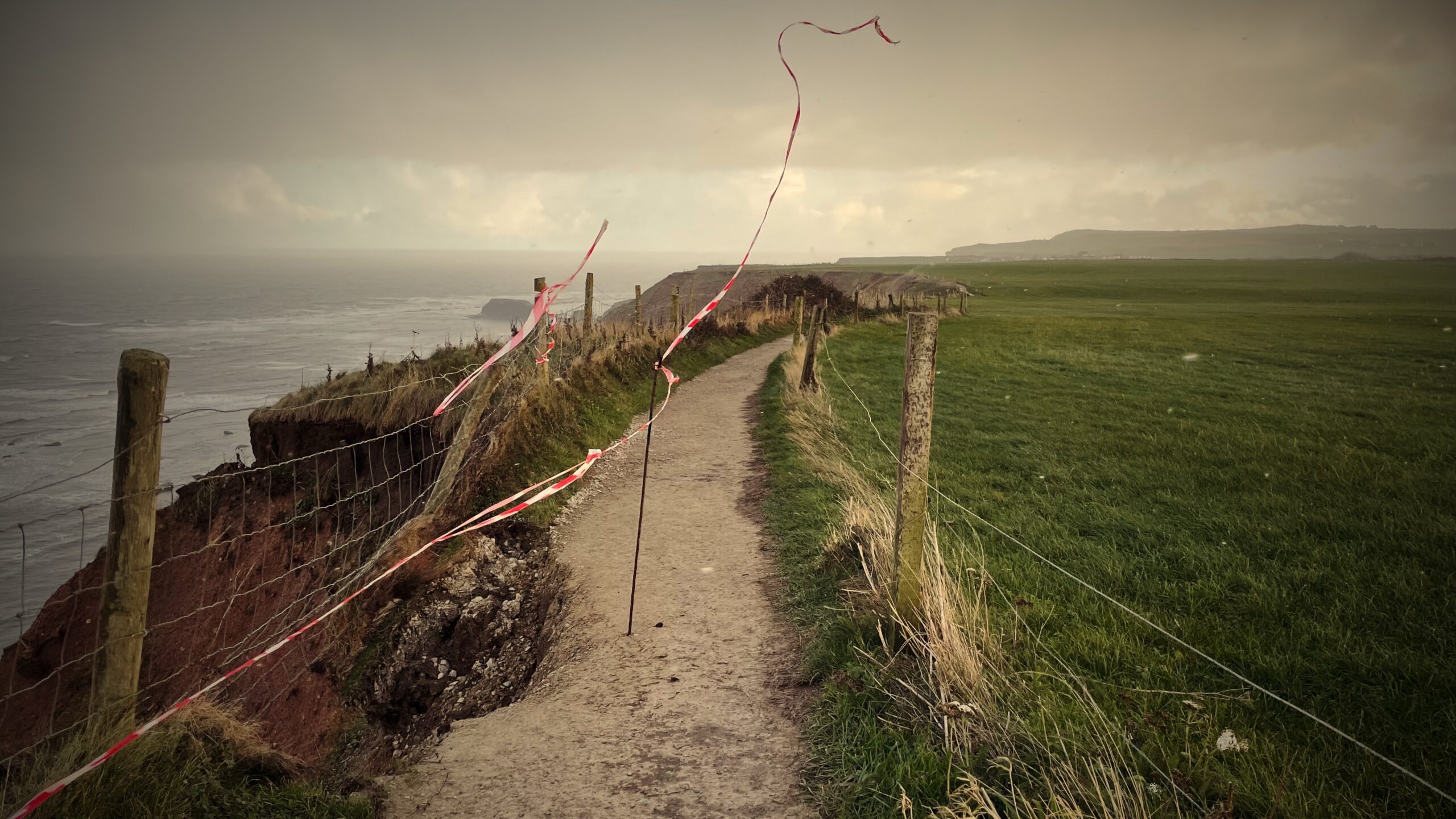One from Tuesday’s little jaunt to Whitby. I had fancied a stroll along the coastal path to Saltwick, though the weather had other ideas. A mischievous wind and a steady parade of squalls were doing their utmost to suggest that I might prefer to remain upright. The path here is crumbling with admirable enthusiasm. One wonders how the National Park have resisted the urge to close or divert it. No doubt they are locked in some valiant negotiation with the landowner or farmer, who is possibly calculating what part of his fields will vanish next.
That fence on the landward side does not help matters. The whole thing feels rather like being herded along a chute towards a cliff. I imagine it will be moved inland in due course, taking a slice of farmland with it. The farmer is unlikely to be delighted, although if his land has toppled into the sea he may already be nursing visions of compensation blooming before him. Perhaps I am being unfair. Then again, perhaps not.
What intrigues me is the legal nicety of a footpath or other Right of Way that decides to hurl itself off a cliff. Or similarly, one that ends up annexed by a river. If the original route shown on the Definitive Map has long since been lost to the sea, the public might once have walked round the void. That only works if there is no fence to pen them in.
I can accept that when a Right of Way disappears, it may well be lost. Though the law seldom allows anything so tidy. The obvious premise is that the right exists over land and if the land decides it has had enough and leaves, the right follows it into oblivion. Yet we all know that rights can run through fords, along river beds, across tidal flats, and over the sands of Morecambe Bay.
I once read that if the land merely slumps or turns swampy, the user simply gets wet feet but remains on the land where the right lies. If the surface drops suddenly to a lower level, the path still exists, even if traversing it begins to resemble an exercise in mountaineering. But if the whole section collapses into the sea during some theatrical Spring tide, and the waves whisk it away without trace, then no land remains for the right to inhabit. So the right is extinguished. This is all very well in theory, though reality has an awkward habit of making a mockery of neat distinctions. Much of the cliff might be reduced to slurry in moments, with some of it perhaps lingering on the shore. Whether that makes any difference at all is anyone’s guess.
As the cliff continues to retreat, walkers edge along an ever thinner ribbon of grass until even the fence gives up and tumbles down. People then step over its remains and take to the field behind it. If this creeping migration happens gradually, a new line might in time acquire rights through use. Twenty years is the usual figure for presumed dedication. Unfortunately the cliff is busy performing its own version of musical chairs, shifting the line long before the clock runs out. The result could be no established public right of way.
There would certainly be uproar were the landowner or the National Park to attempt to bar the public from using this well loved route, short of invoking safety. Attempting fortifications sturdy enough to withstand the sea would be futile; the sea would win that contest without breaking sweat. The cliff has been retreating since the last ice age, and it shows every sign of continuing with unabated enthusiasm.
All of which begs the question: is climate change exacerbating the problem by making the weather more extreme and more frequent?

Leave a Reply